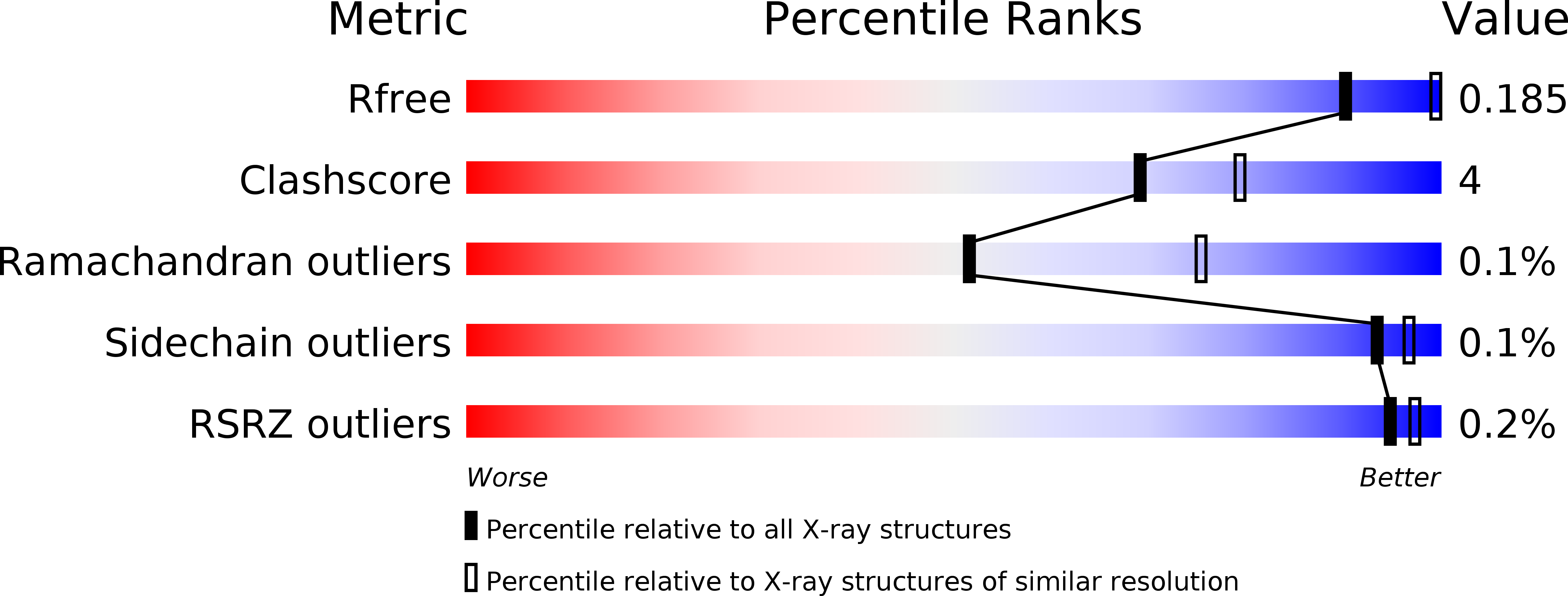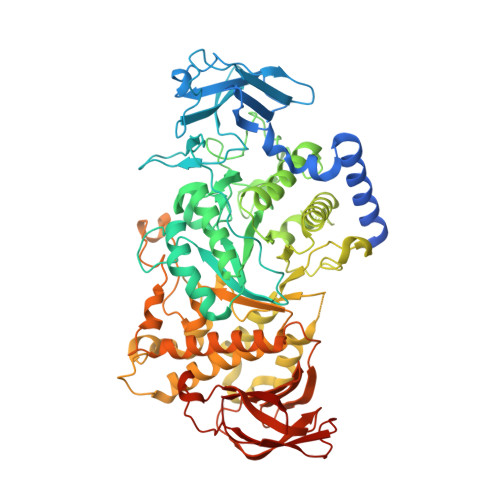Structural Basis of Glycogen Branching Enzyme Deficiency and Pharmacologic Rescue by Rational Peptide Design.
Froese, D.S., Michaeli, A., Mccorvie, T.J., Krojer, T., Sasi, M., Melaev, E., Goldblum, A., Zatsepin, M., Lossos, A., Alvarez, R., Escriba, P.V., Minaissan, B.A., von Delft, F., Kakhlon, O., Yue, W.W.(2015) Hum Mol Genet 24: 5667
- PubMed: 26199317
- DOI: https://doi.org/10.1093/hmg/ddv280
- Primary Citation of Related Structures:
4BZY - PubMed Abstract:
Glycogen branching enzyme 1 (GBE1) plays an essential role in glycogen biosynthesis by generating α-1,6-glucosidic branches from α-1,4-linked glucose chains, to increase solubility of the glycogen polymer. Mutations in the GBE1 gene lead to the heterogeneous early-onset glycogen storage disorder type IV (GSDIV) or the late-onset adult polyglucosan body disease (APBD). To better understand this essential enzyme, we crystallized human GBE1 in the apo form, and in complex with a tetra- or hepta-saccharide. The GBE1 structure reveals a conserved amylase core that houses the active centre for the branching reaction and harbours almost all GSDIV and APBD mutations. A non-catalytic binding cleft, proximal to the site of the common APBD mutation p.Y329S, was found to bind the tetra- and hepta-saccharides and may represent a higher-affinity site employed to anchor the complex glycogen substrate for the branching reaction. Expression of recombinant GBE1-p.Y329S resulted in drastically reduced protein yield and solubility compared with wild type, suggesting this disease allele causes protein misfolding and may be amenable to small molecule stabilization. To explore this, we generated a structural model of GBE1-p.Y329S and designed peptides ab initio to stabilize the mutation. As proof-of-principle, we evaluated treatment of one tetra-peptide, Leu-Thr-Lys-Glu, in APBD patient cells. We demonstrate intracellular transport of this peptide, its binding and stabilization of GBE1-p.Y329S, and 2-fold increased mutant enzymatic activity compared with untreated patient cells. Together, our data provide the rationale and starting point for the screening of small molecule chaperones, which could become novel therapies for this disease.
Organizational Affiliation:
Structural Genomics Consortium, Nuffield Department of Clinical Medicine, University of Oxford, OX3 7DQ, UK.


















